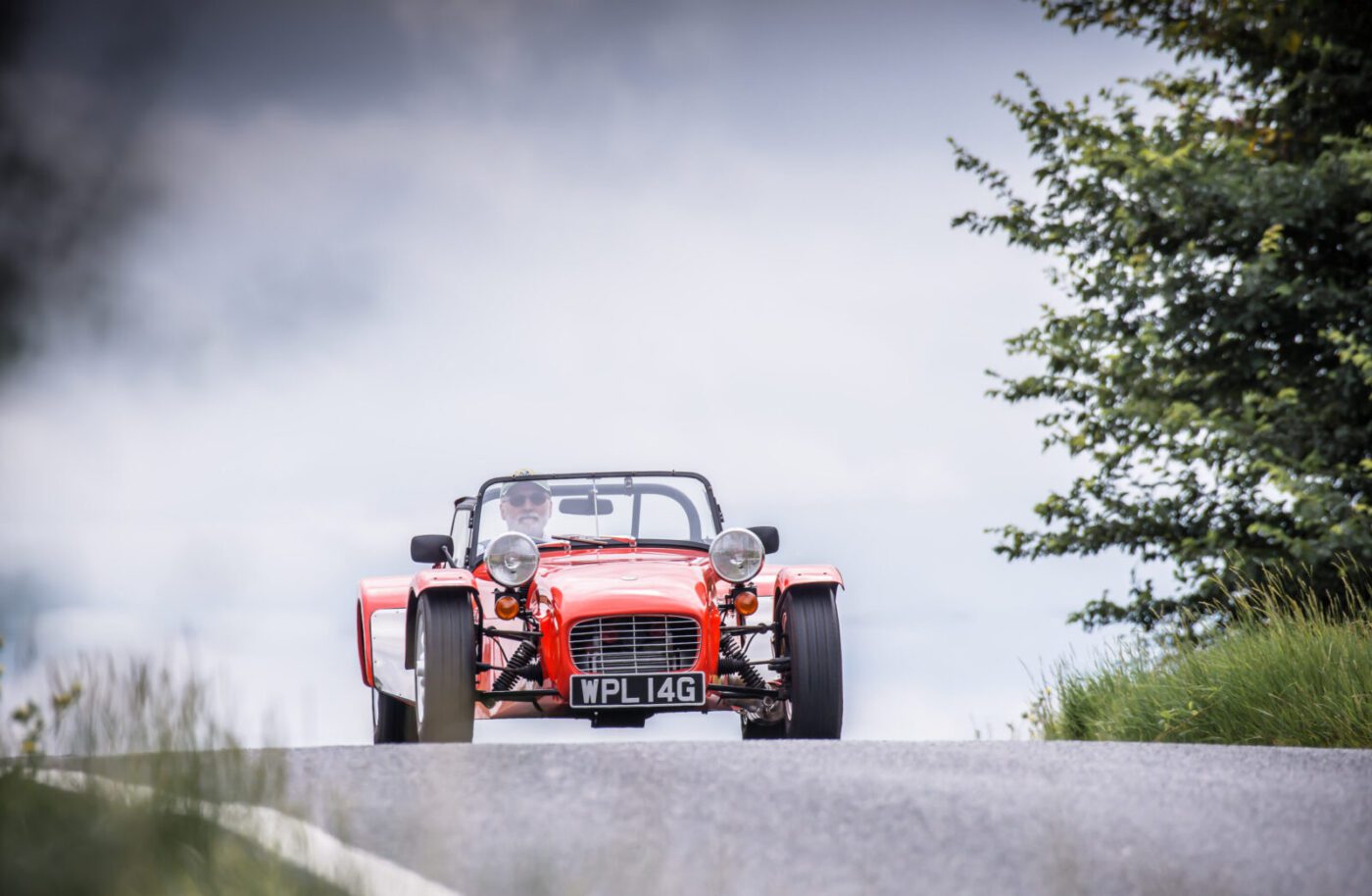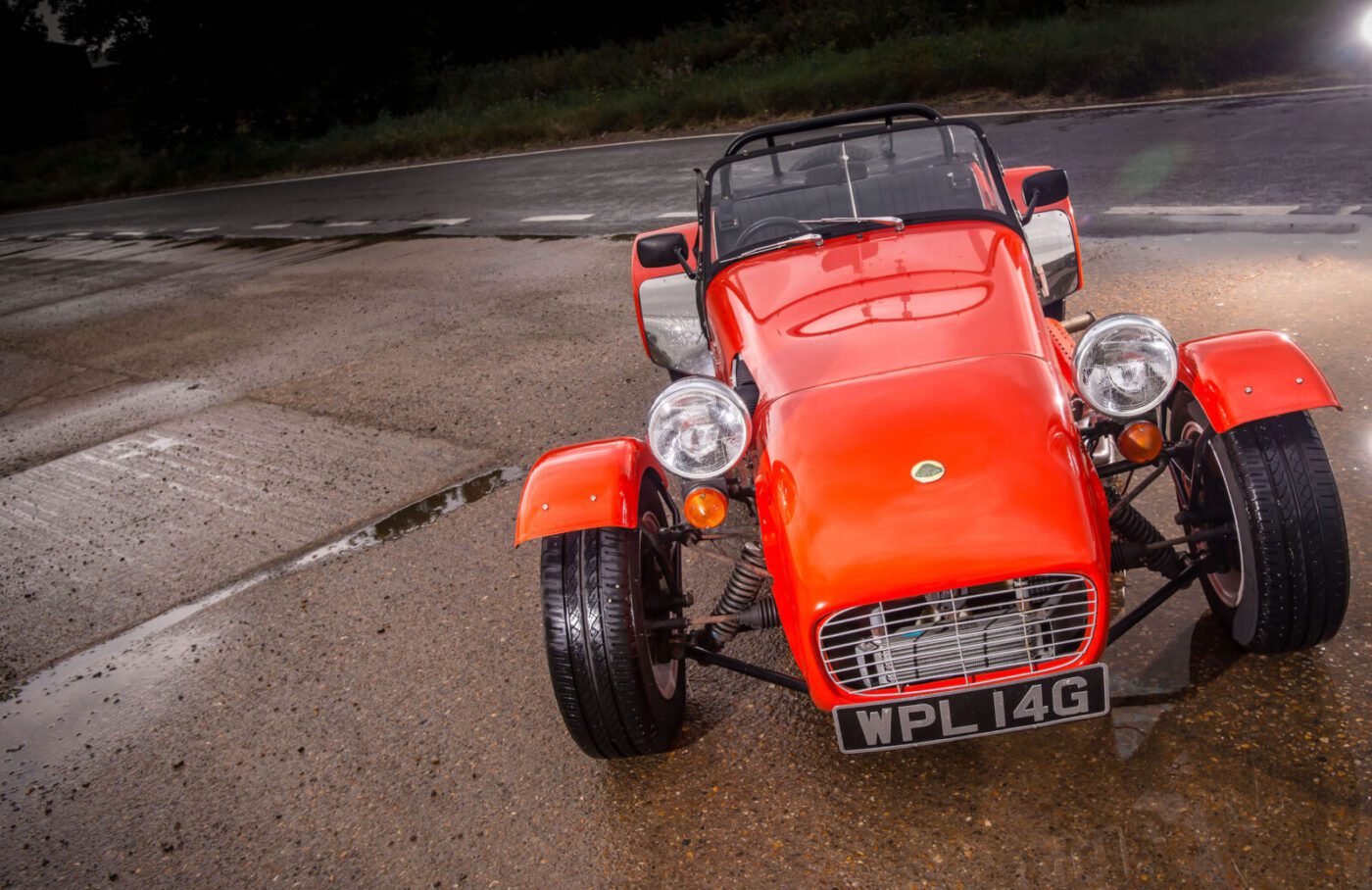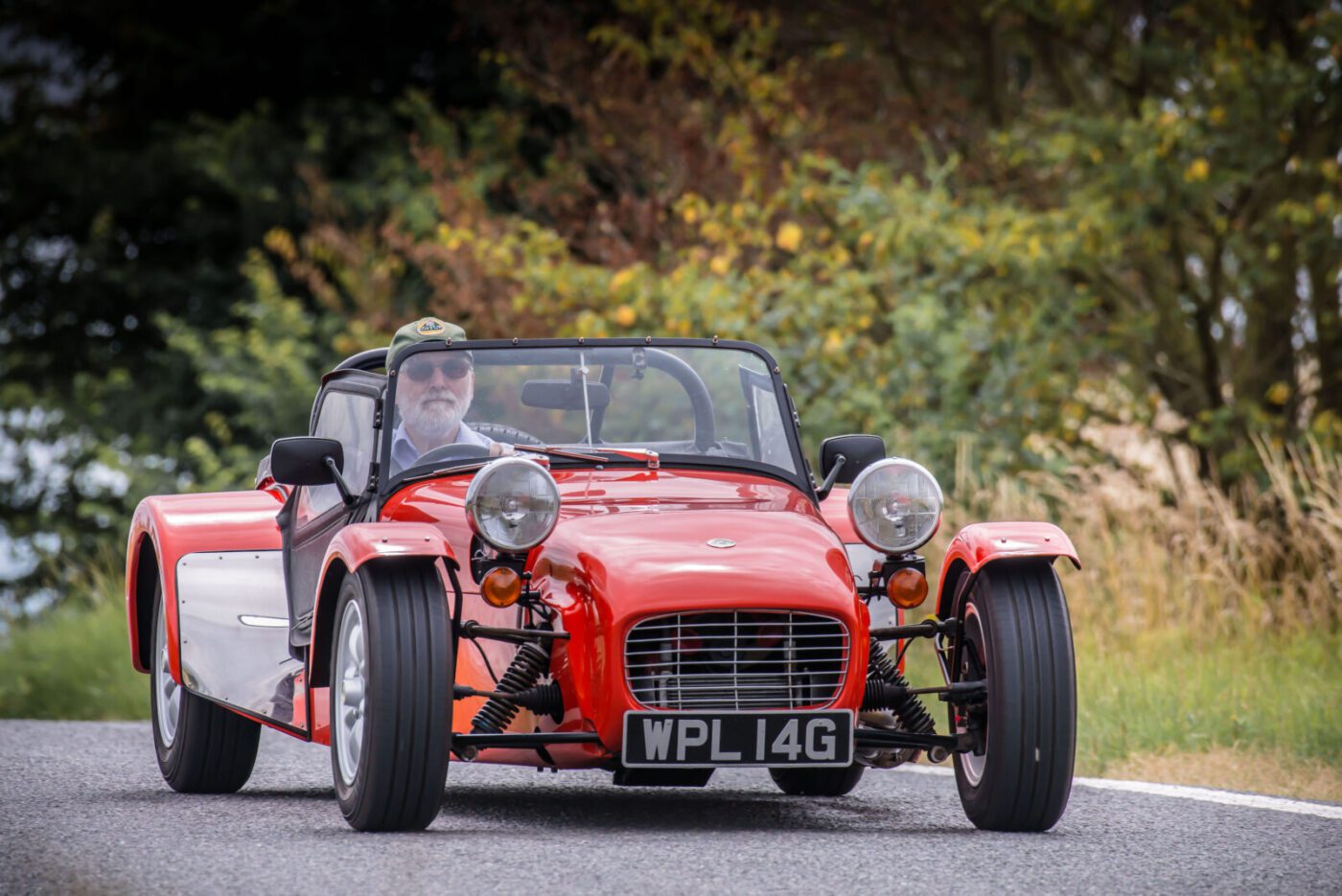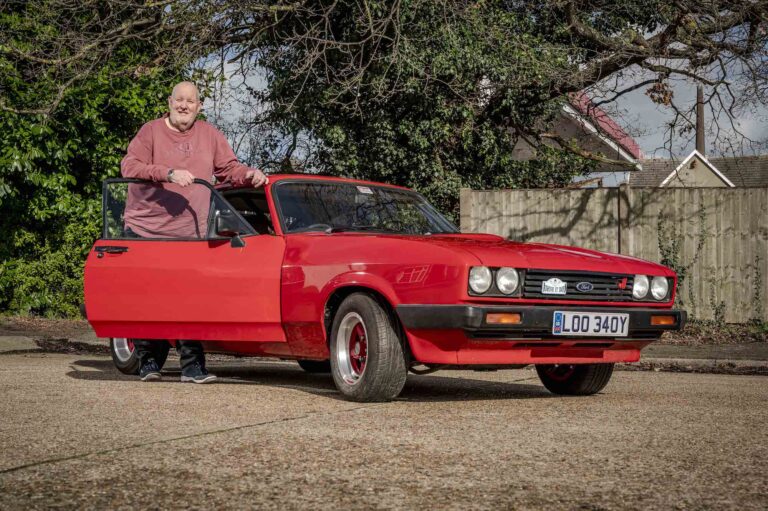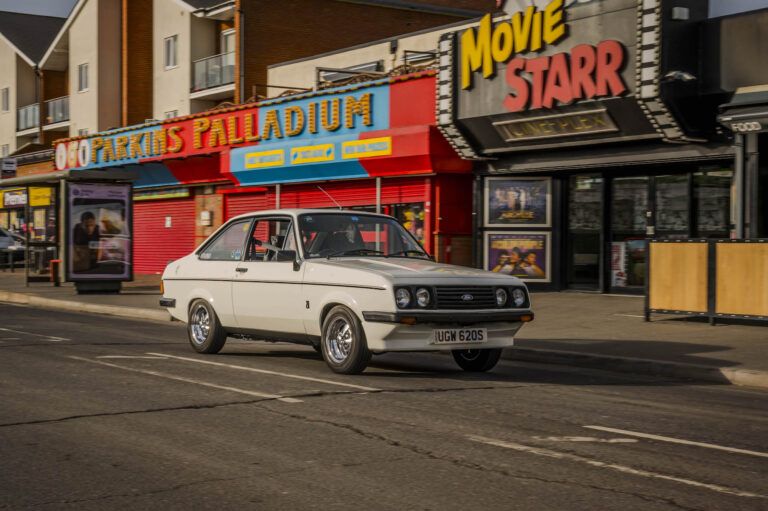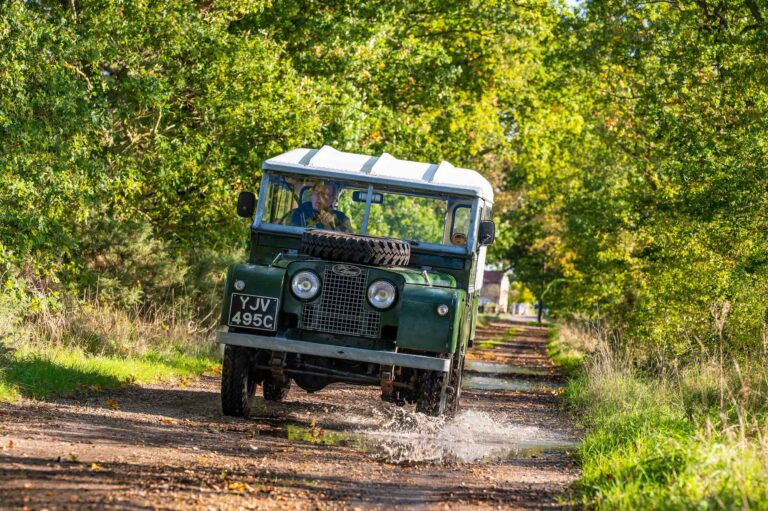The diminutive Lotus Seven, Colin Chapman’s ultra-simple, lightweight, two-seater racing car for the road, might seem the most unlikely of daily drivers.
But for the best part of 10 years, that’s exactly how Bob Richardson and his wife Gill used their little orange sports car, come rain, shine or even snow.
While many Sevens were bought for club racing, in 47 years of ownership Bob and Gill’s Series 3 has been used exclusively on the road, often weaving through the streets of rush hour London and attracting plenty of attention along the way.
Bob, who bought the car in 1970 for £750, complete with one very famous name listed as a previous owner in the log book, remembers his wife driving the car to work at a building company in Brixton.
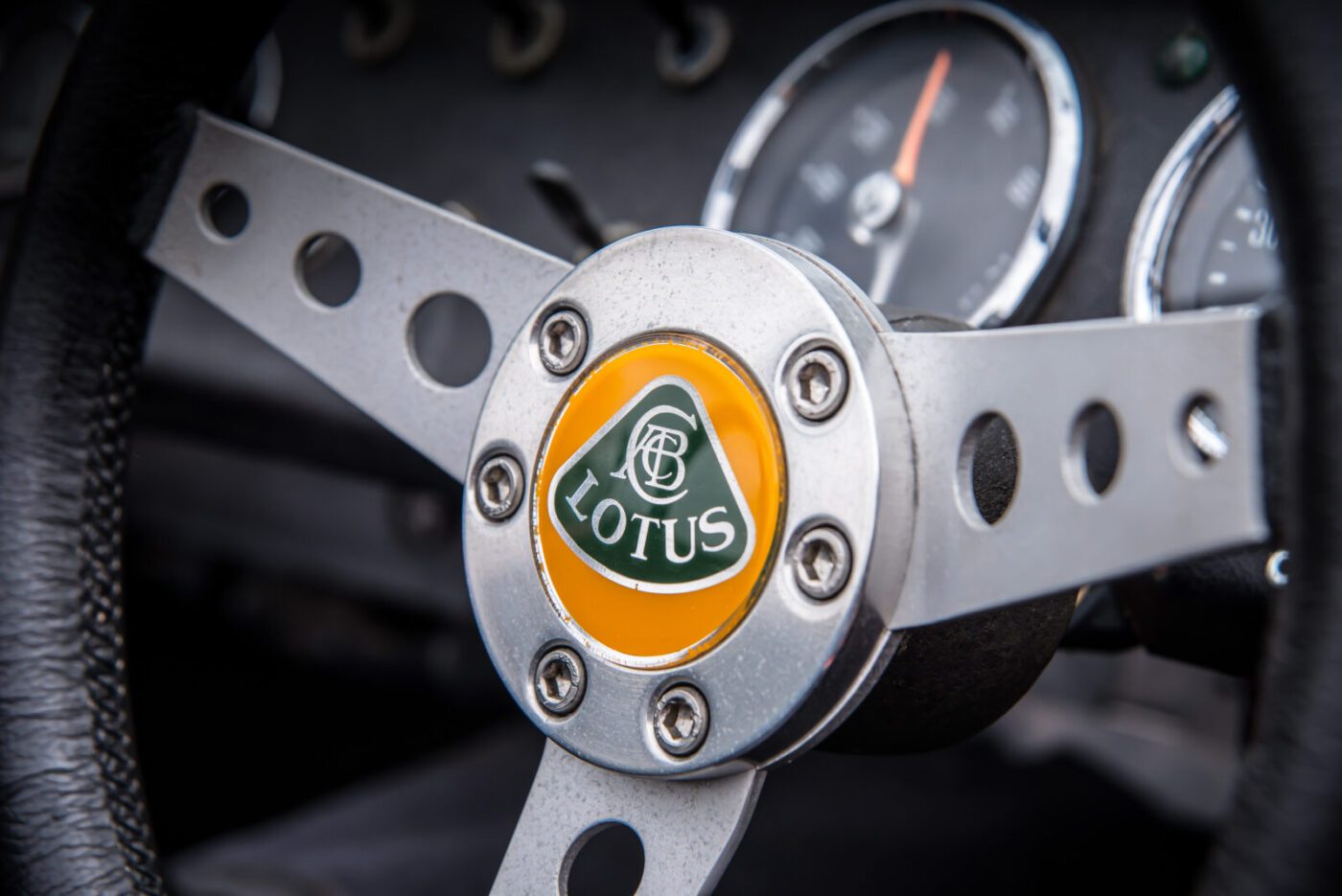
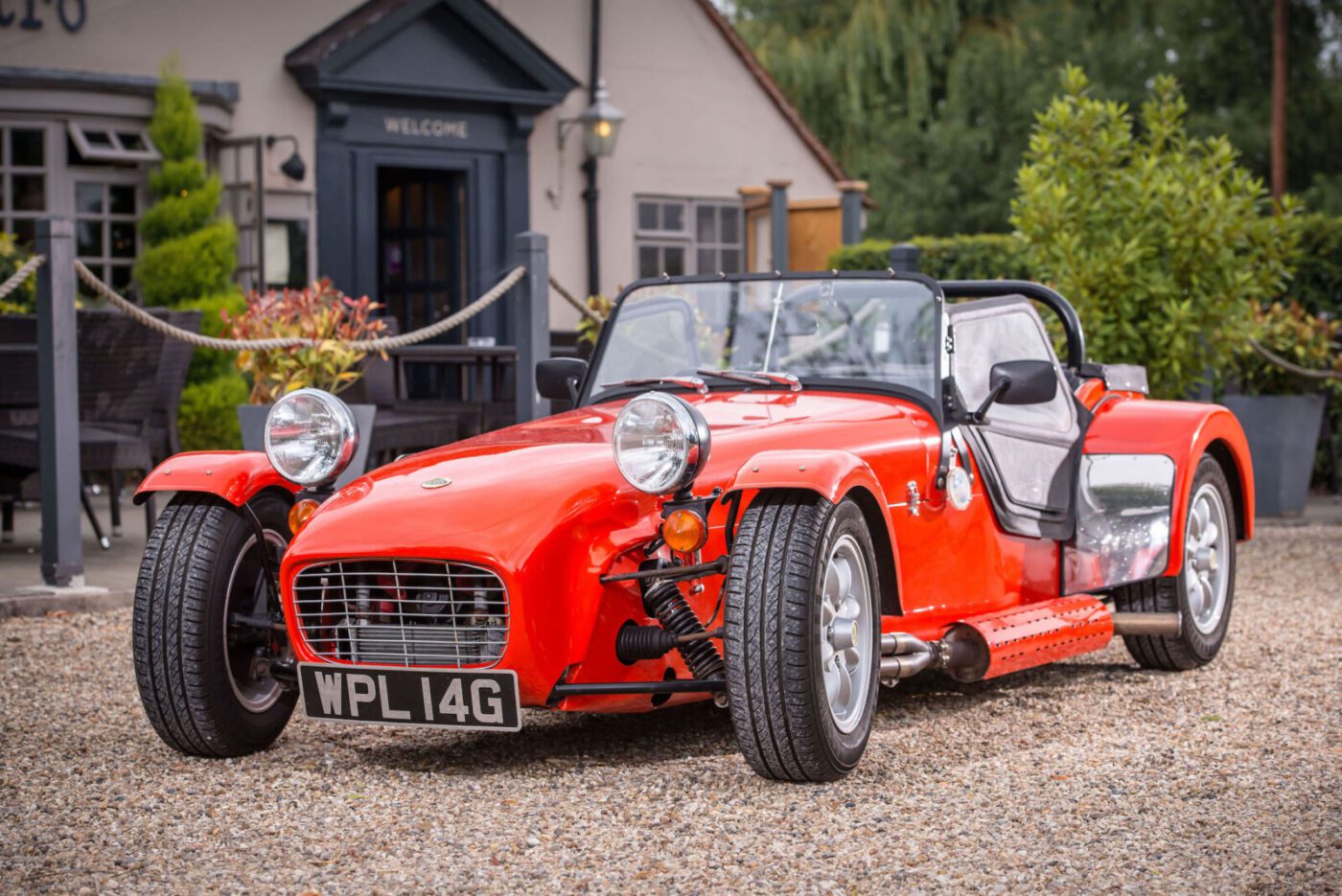
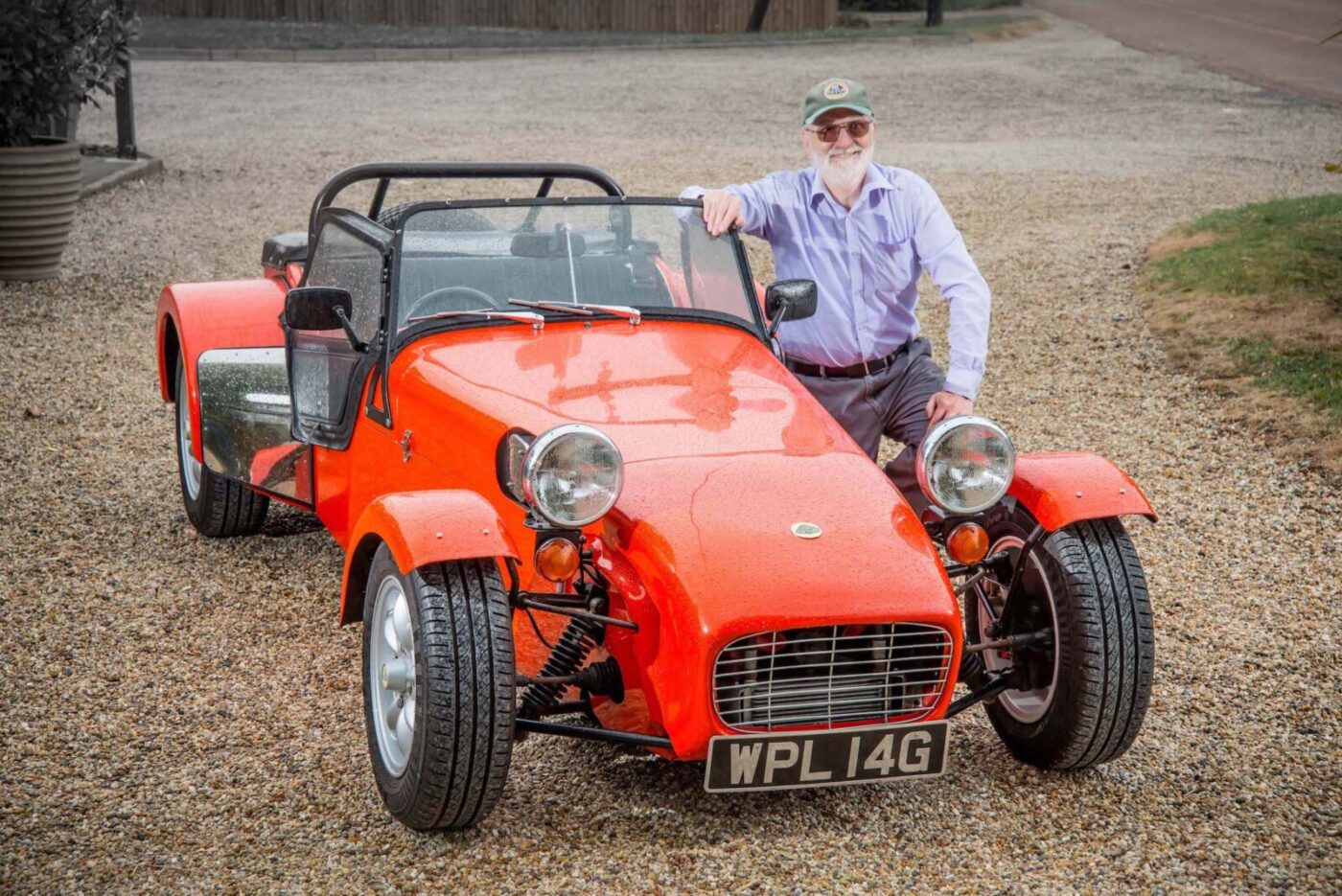

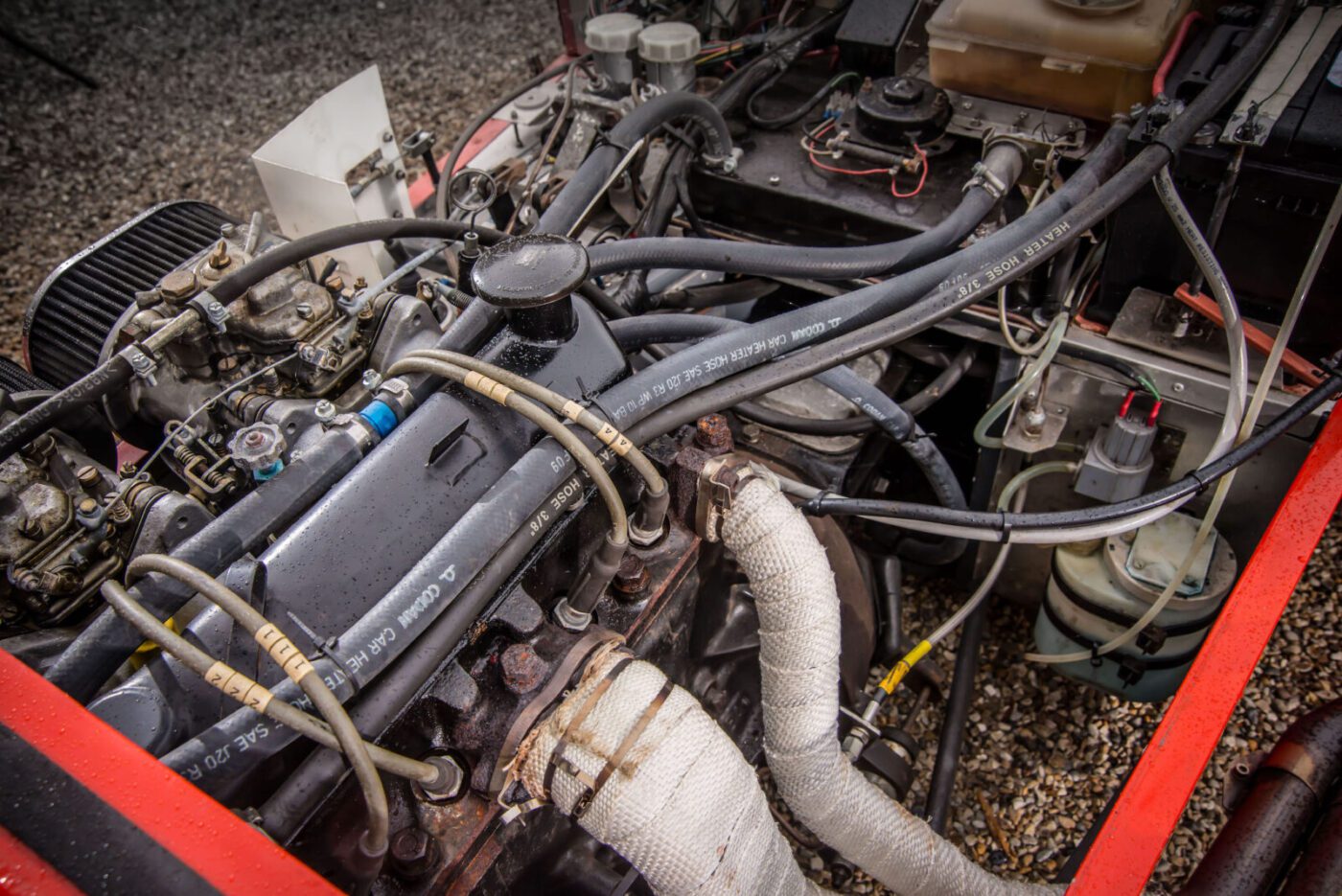
A Sprite had been pushed from there into the river
“Gill got a job in Brixton and didn’t want to park her Mini in the road, while I did not want to park the Seven in the very exposed car park at my work at Mullards in Mitcham – we know of a Sprite that had been pushed from there into the river,” says Bob, now 69.
“The Lotus was so small it would fit at the side by the manager and directors’ cars, where it was safe. She got a lot of comments driving it around, this pretty young thing driving a Lotus through London.
“We moved to Woolwich and she finally realised she could get the train, so I started driving it to Dagenham, where I was working for Kelvin Hughes. I would be at traffic lights and felt quite intimidated next to the lorries – the car was not even as tall as the wheel on the lorry. The driver would look out and shout ‘do you want to sell it mate?’ I must have had 10 people ask me to buy it.”
But Bob could never let go of the car that’s been with him longer than even Gill, rebuilding either engine, bodywork or both three times in the course of covering nearly 80,000 miles.
Surprisingly for a car that was only 18 months old when he bought it in July 1970, the Seven had already raced through four previous owners, including one Ronald David Wood, of Flat 4, 83 Lower Sloane Street, SW1.
Better known simply as Ronnie Wood, then with Rod Stewart in the Faces and later the Rolling Stones, he bought the car on December 22, 1969, selling it in April the following year.
READ MORE ABOUT SOME OF OUR GREATEST CLASSIC CARS WITH

A series of articles on our Cult Classics site.
Christmas present for a girl who thought it was dreadful and sold it almost immediately
“I believe it’s him,” says Bob. “The person I bought it off told me it was but I can’t prove it – I emailed his website but got no response.
“I was told he bought it as a Christmas present for a girl who thought it was dreadful and sold it almost immediately. I would like to be able to prove beyond doubt it’s Ronnie Wood’s, so if anyone out there knows…!”
As a then single, 22-year-old man driving an old Mini van, Bob was attracted to the Seven as much by its price as its fun factor.
“My mates bought things like Sprites, but they were expensive. This was cheaper because you built them yourself,” says Bob.
Most Sevens were indeed sold in kit form, which didn’t attract Purchase Tax (the forerunner of VAT), and Bob had arranged to build a new car with a friend who had a workshop at nearby Carshalton.
“I sold the Mini van and saved up enough money with help from my mum and dad. They thought it was a bit of fun, and I was not married at the time.
“When I bought it they were going from the S3 to the S4. I had a test drive in a series 4 and I was confident I could do the car if I got a kit and had a mate to help me. I’m a practical person,” says Bob, who was working as an electronics engineer at Mullards.
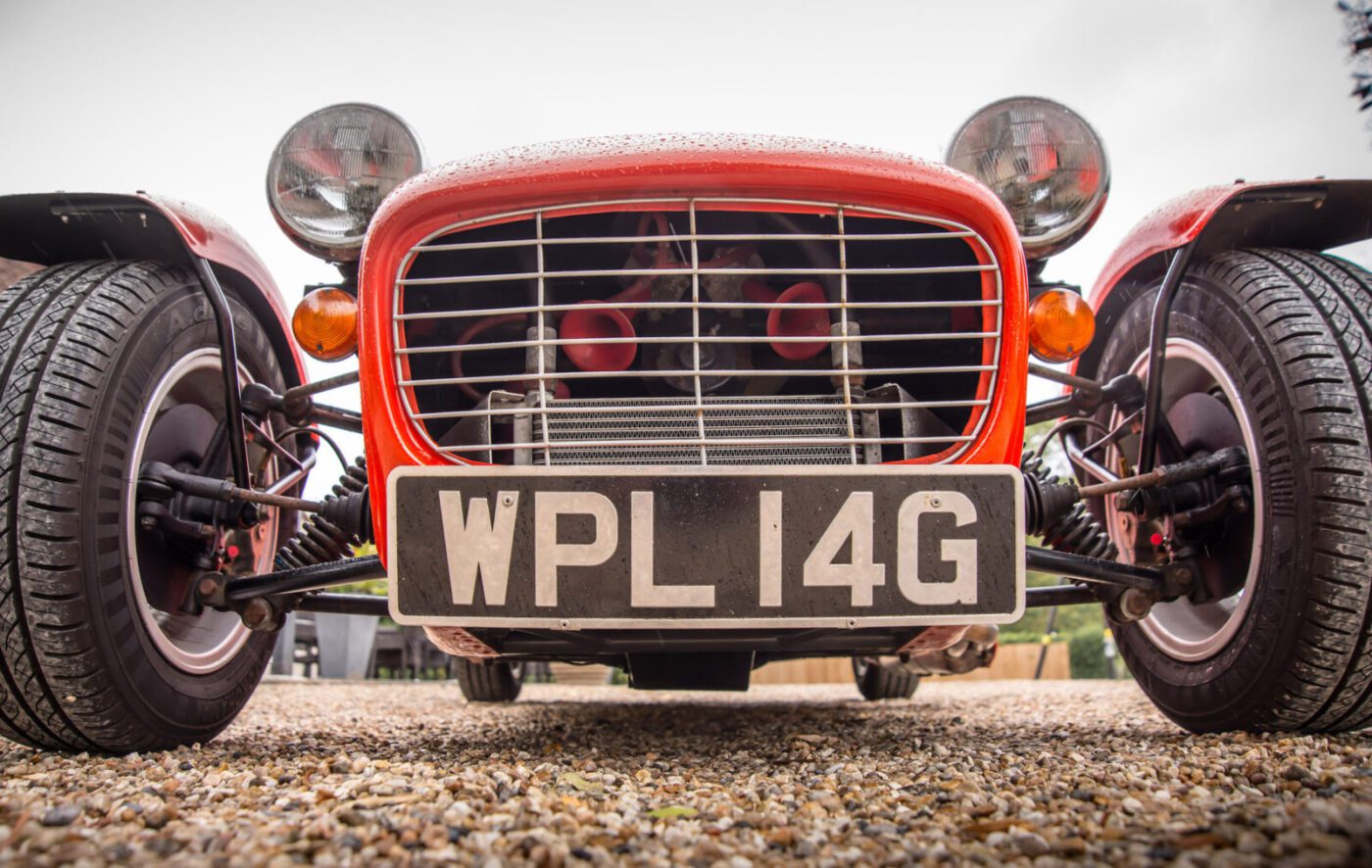
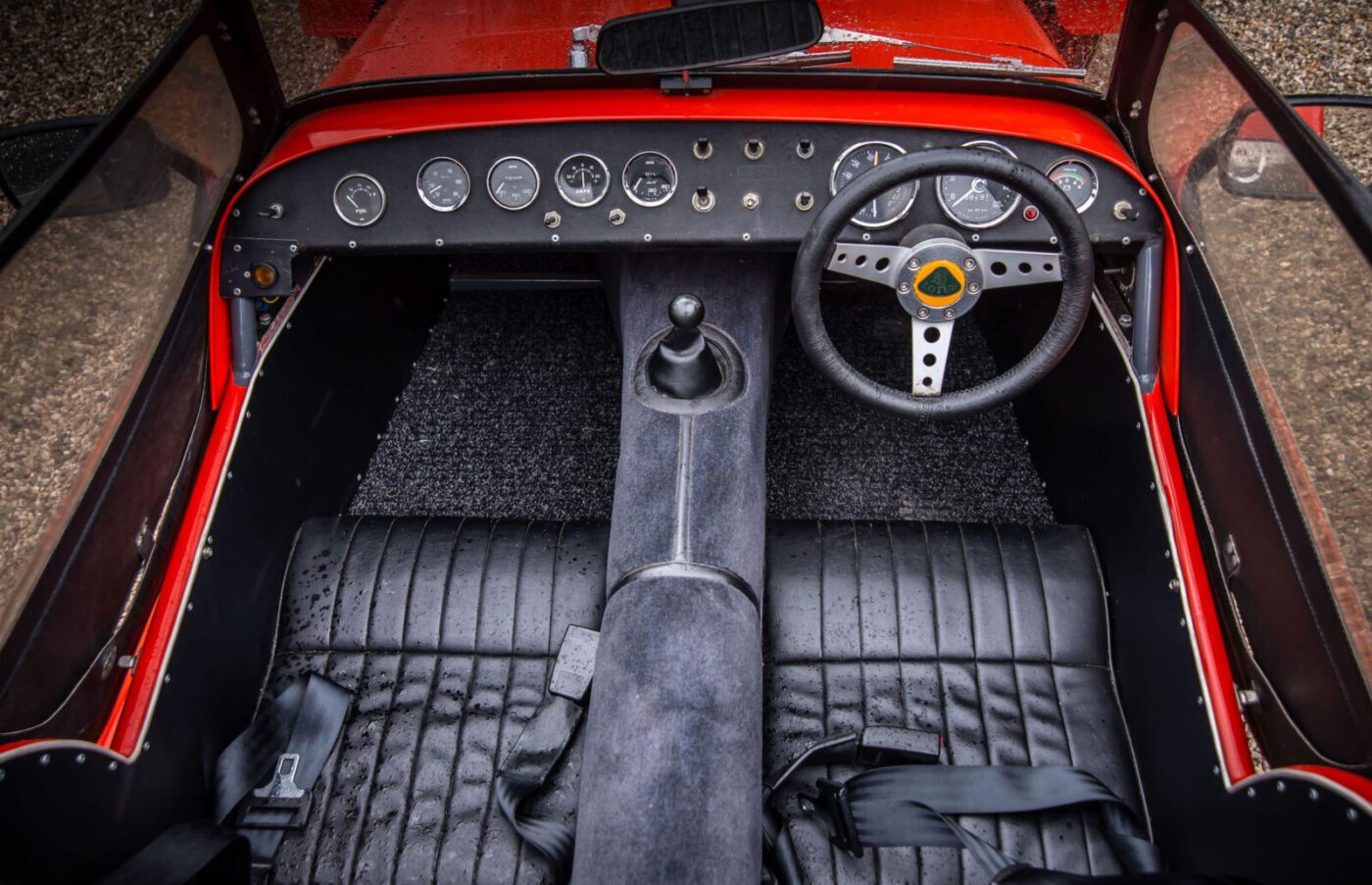
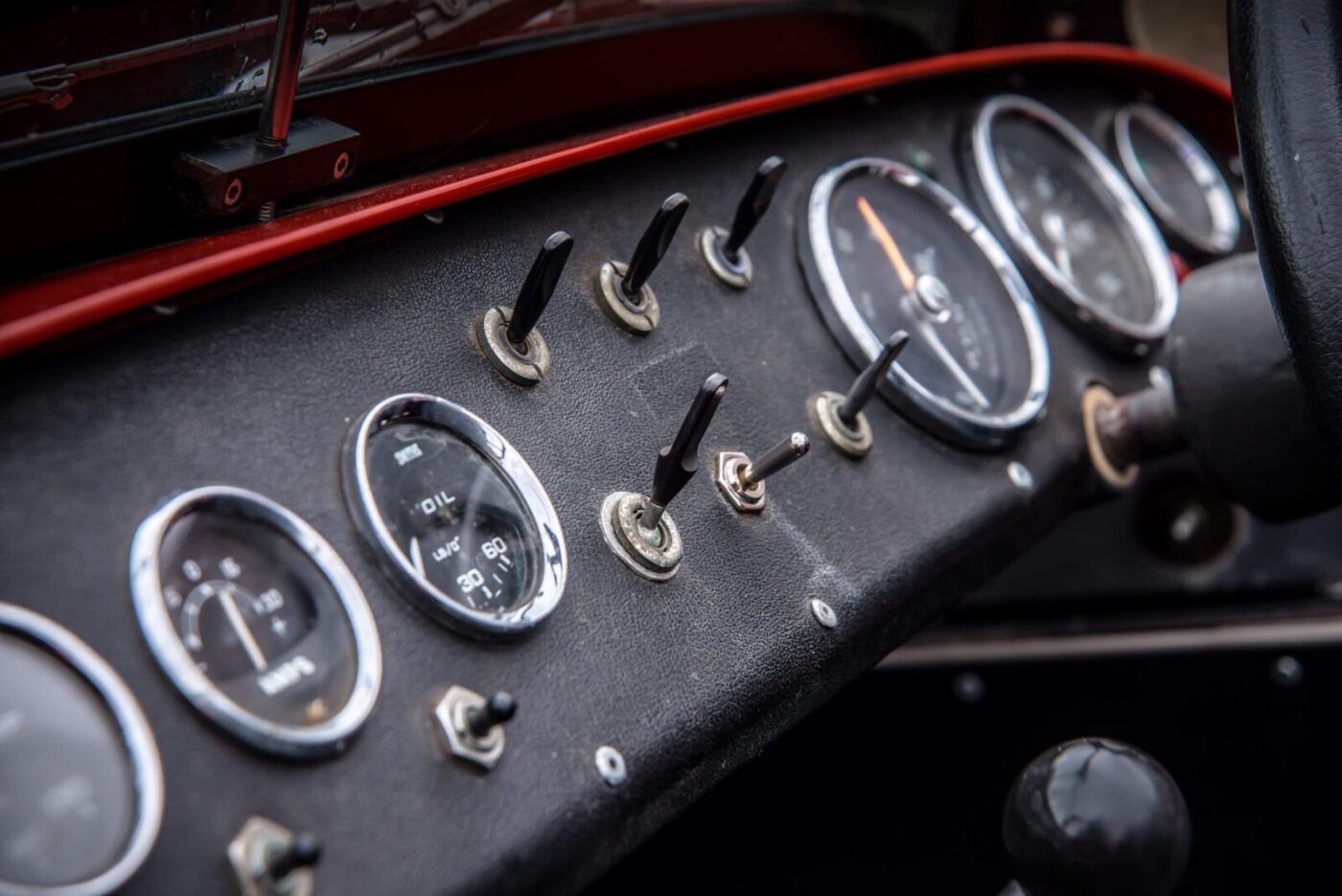
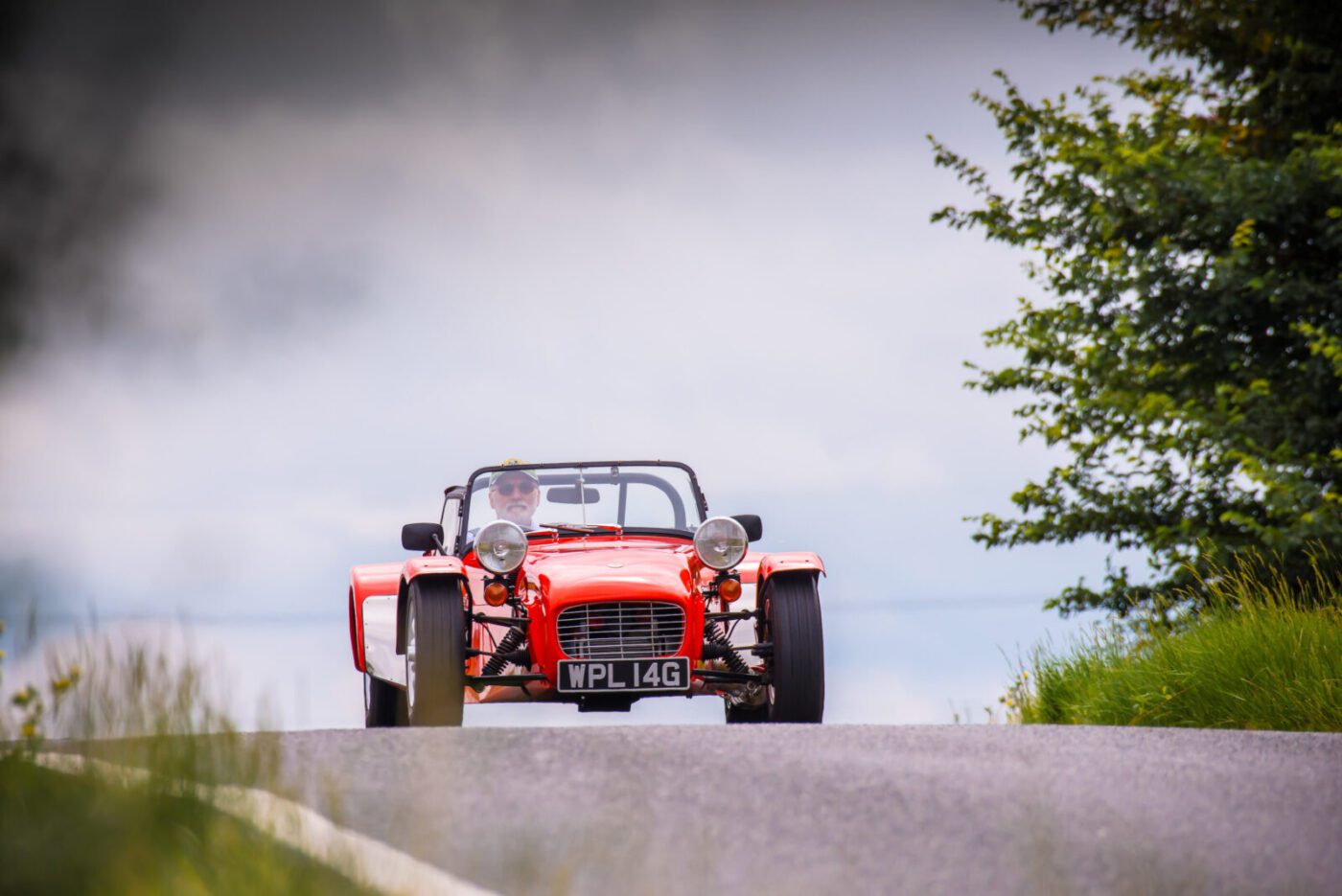
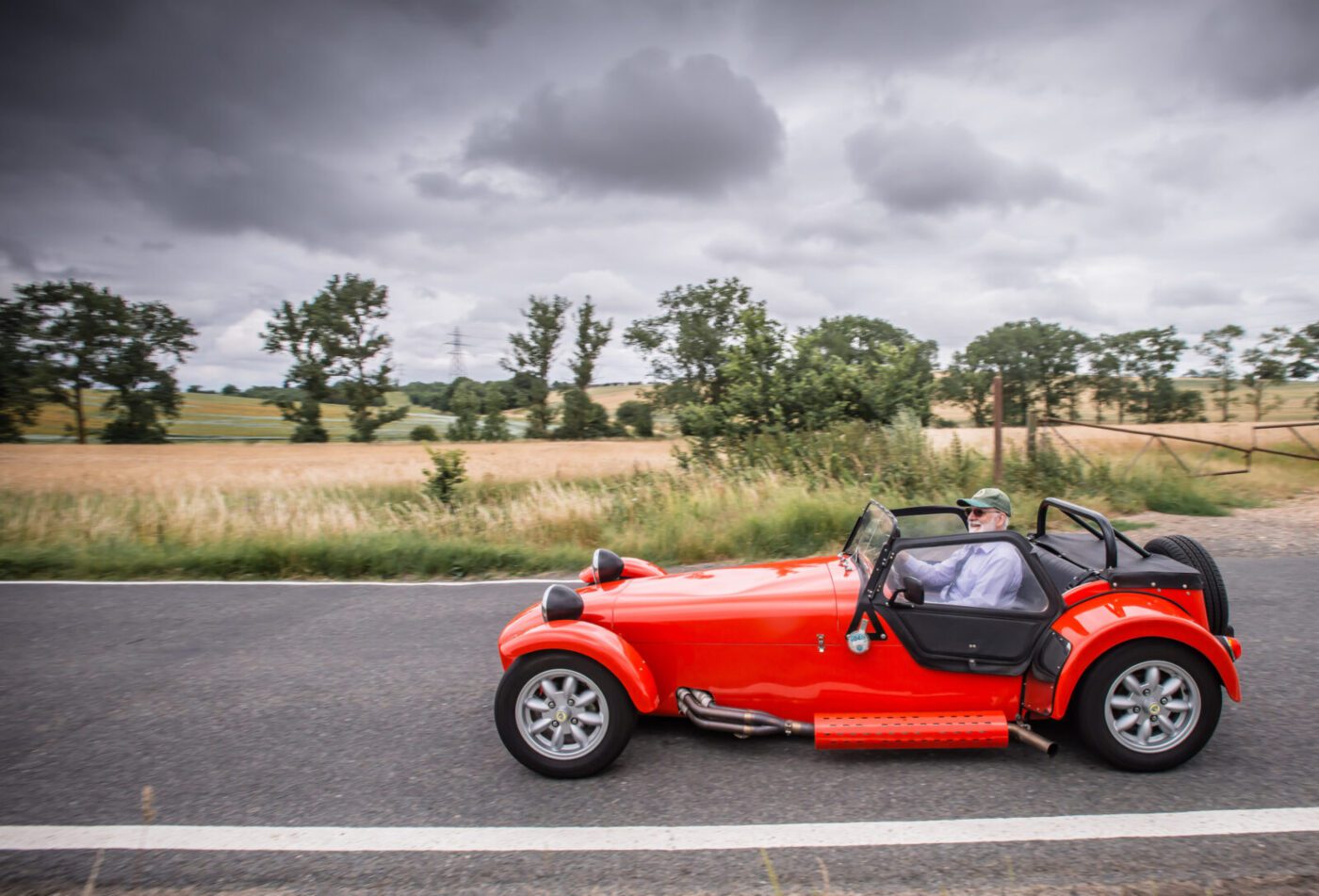
It sounds silly now, but I could not afford another £100
“But the price went up a lot, from £750 to £850. It doesn’t seem a lot now but it was then. It sounds silly now, but I could not afford another £100. I looked around for a secondhand one and saw an advert in the London Evening Standard. I had a test drive and it didn’t seem too bad – it hadn’t been smashed up or anything. I made him an offer and bought it for £750. When I later rebuilt it I spent more than that just on the carbs!”
As well as its famous former owner, the car is notable for its unusual colour.
“The first owner was a chap at a company called Chic-Grit. Unusually, the car had a very good paint job in Porsche tangerine – it was rather flash and unusual,” says Bob.
“Chic-Grit was a company near Lotus in Norfolk, and they used to assemble cars for them and put a rather special finish on them for shows. I wrote to the owner, David Moorfoot, and he confirmed it was on a stand at the Racing Car Show in 1969.
“Purchase tax was due on completed cars, but I believe they got round this by having them put together by Chic-Grit and used at shows.”
Bob’s car was one of just 340 series 3 cars sold in 1968 and 1969, featuring Ford’s 1600cc Kent crossflow engine capable of producing between 85 and 90bhp in standard tune.
But with the car weighing in at just under 550kg, the aluminium and fibreglass bodied roadster could sprint to 60mph in 7.7 seconds, rapid for the day and feeling even quicker in such a low, sparse body.
81.5% of customers could get a cheaper quote over the phone
Protect your car with tailor-made classic car insurance, including agreed value cover and discounts for limited mileage and owners club discounts

The ultimate in road-going race cars
The series 3 is regarded as the high-water mark of Seven production.
“The series 4 was supposed to be a big improvement, but at the time it was not popular and when Caterham took over they quite quickly went back to the series 3,” says Bob.
Now, 60 years since the first Seven was launched with an 1,172cc Ford side-valve engine producing just 40bhp, the car is still regarded as the ultimate in road-going race cars.
On its 50th anniversary, Classic and Sportscar said of Colin Chapman’s brainchild: “The Seven is still revered even among modern rivals, for the qualities that made it a shock success in period.
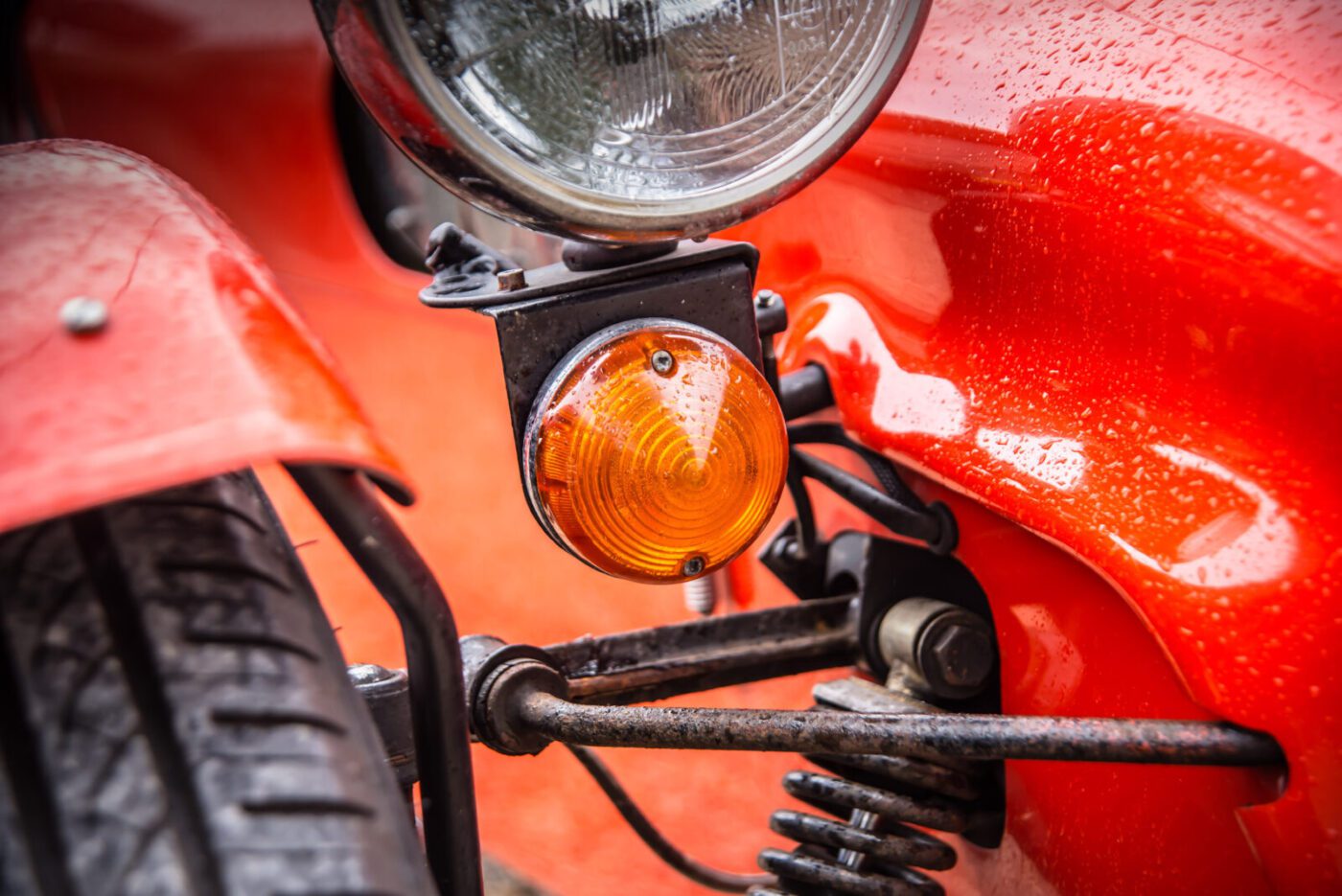
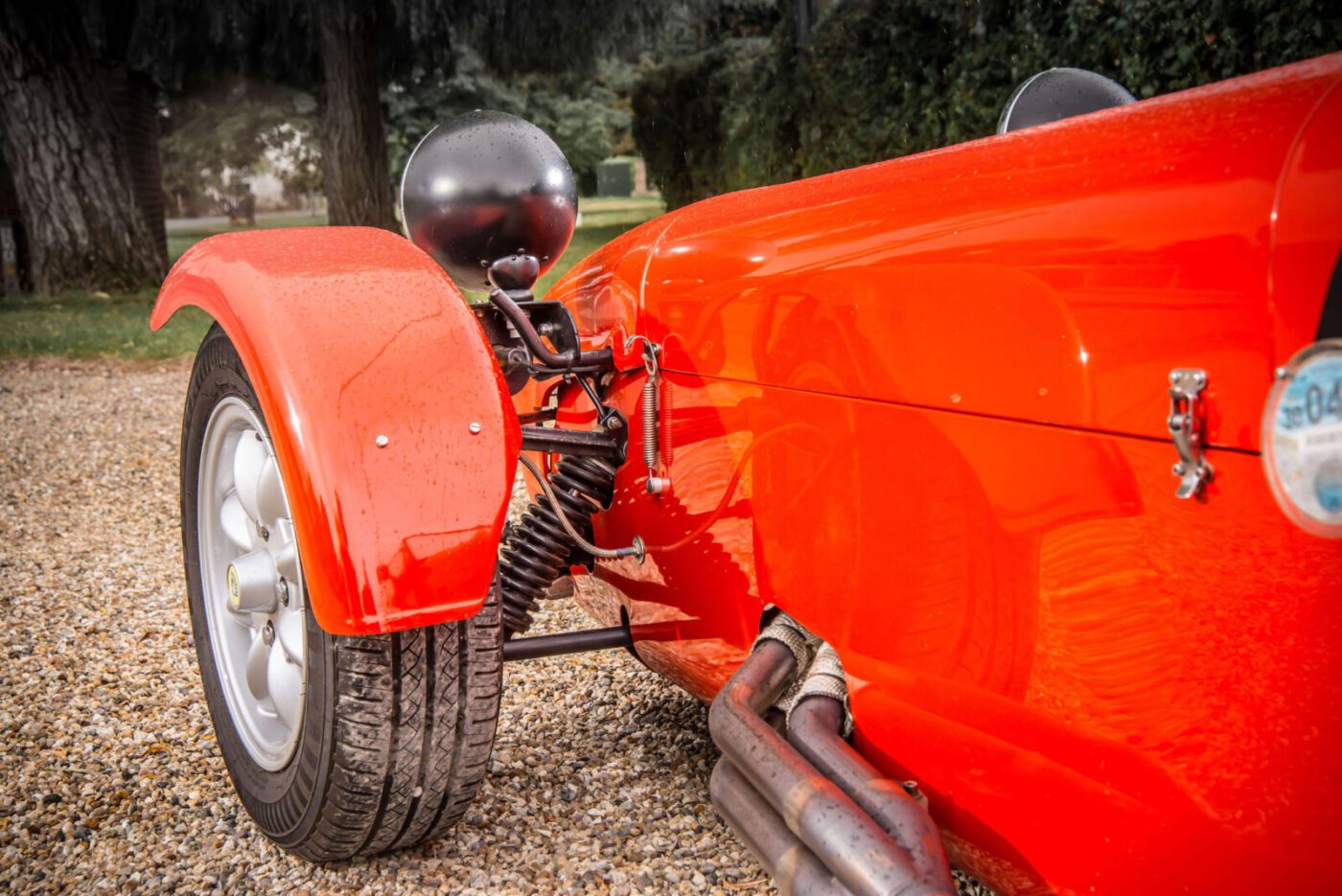
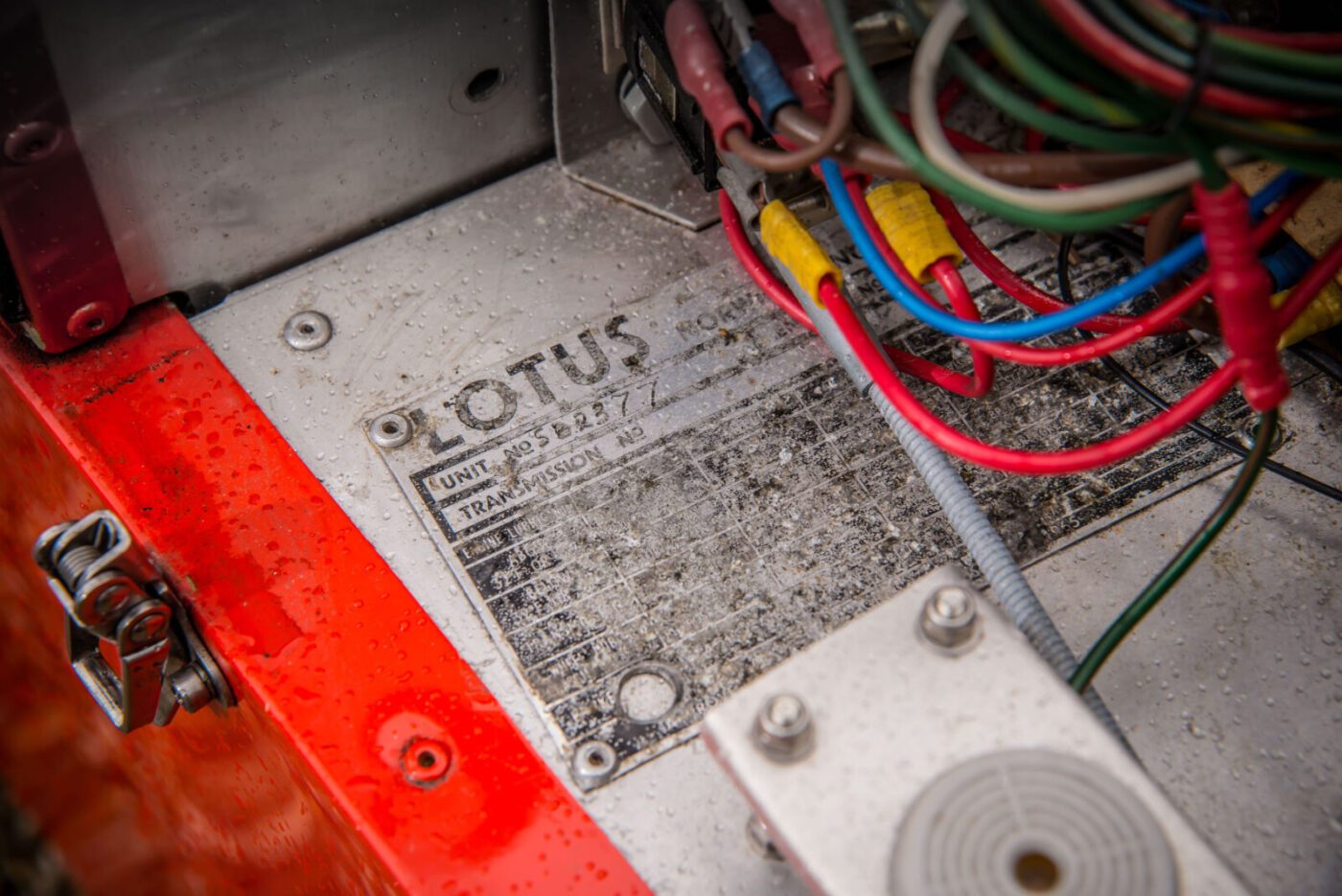
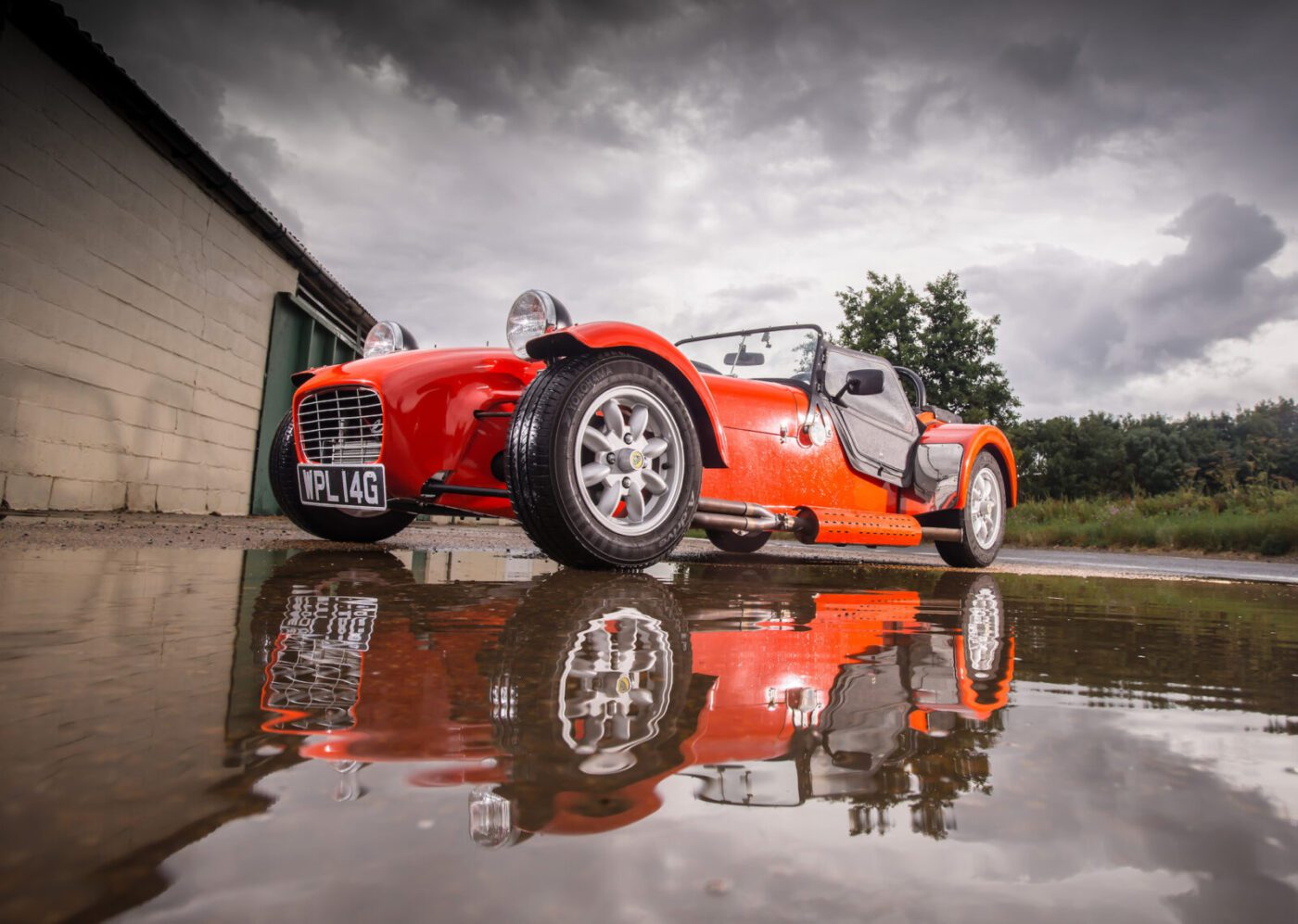
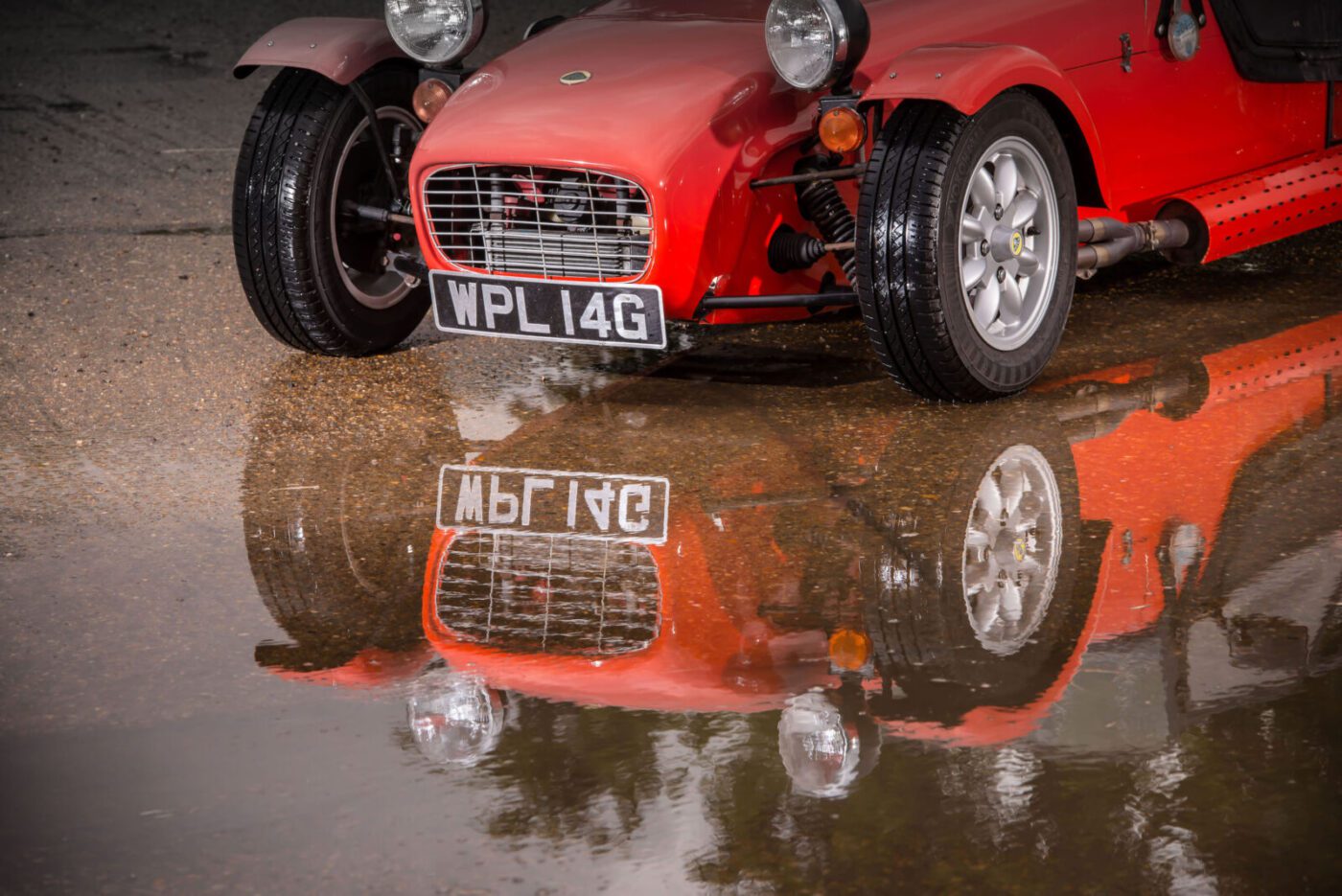
The essential accessory for every true enthusiast driver
“Half a century on it still offers unprecedented handling and thrills for the money, is the essential accessory for every true enthusiast driver, and remains the closest thing you can get to a racing car on the road.”
Bob doesn’t disagree: “It’s quite a harsh drive, but very responsive. There’s no servo assistance on brakes or steering, but it’s very responsive compared to any other road car – turn the wheel and it just goes round the corner. It’s very good fun to drive when the weather’s nice.”
But that didn’t stop him driving it when the weather wasn’t nice.
“It was used as a normal car for many years. I’ve been out in snow, rain, and it was not that bad,” he says.
“You have to be very careful in the snow – very light-footed! It leaked terribly in the rain though. I put some holes in the floor so the water would just leak out the bottom.
“I used to go all over the place – I even took my mate Mike to the church on his wedding day. We’d go to Worcester where me and Gill are both from, and to work via the Woolwich Ferry all the time. They were building the Thames Barrier at the time and a week before it was due to be opened, over the loud speakers we were asked if we’d all like to look at the barrier, so the bloke drove the ferry all the way up to the barrier.”
With the car well-used, and by now well-worn, the couple moved from Woolwich to Essex in 1976, to a house at the end of an unmade road wholly unsuited to the Seven’s low-slung chassis.
“That was the first time when it was not driven because it took such a long time to get up the road,” says Bob.
“It was covered in potholes and would flood completely. I got it to the house but didn’t drive it for three or four years. It was just in the garage.”
It was the only time that Bob has seriously considered selling the Lotus.
READ MORE ABOUT SOME OF OUR GREATEST CLASSIC CARS WITH

A series of articles on our Cult Classics site.
‘Why do you need such a daft car?’
“To be honest I did think of selling it, and it’s the nearest I’ve come to it. My parents would say ‘why do you need such a daft car?’
“But I thought ‘who’s going to buy it?’ It was tatty, it had a couple of accident bends and no MoT. I wouldn’t have got much money for it, and it was silly to sell it as a tatty car that doesn’t work. I thought, if I do it up it will get a lot more money.”
With the road finally repaired, Bob got to work to bring the car back into commission, and it was once again pressed into service as a commuter car.
“I used to travel to work in it to Marconi. Really, I just kept using it until I had a failing of the steering in 2004,” says Bob, who by now had two children.
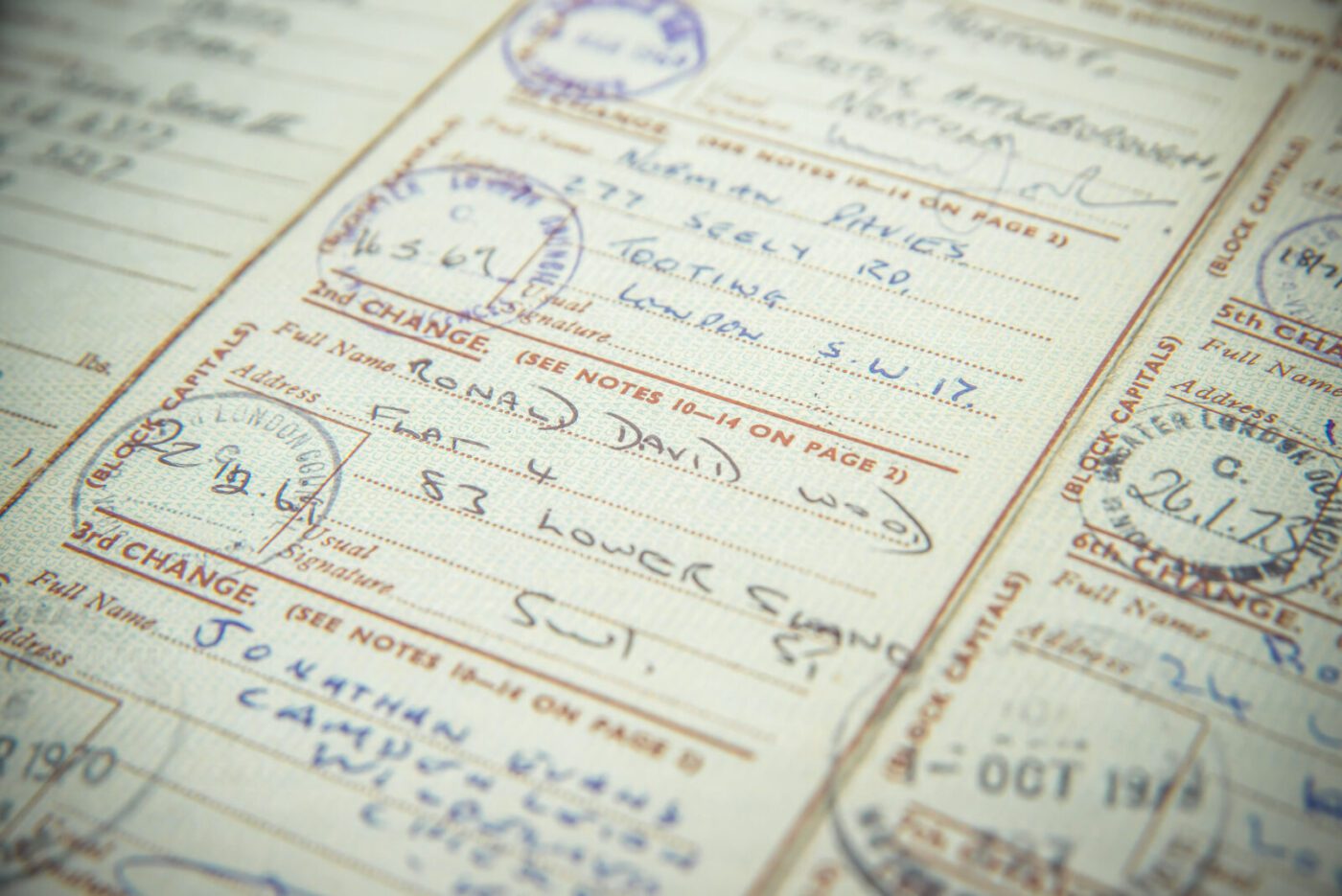
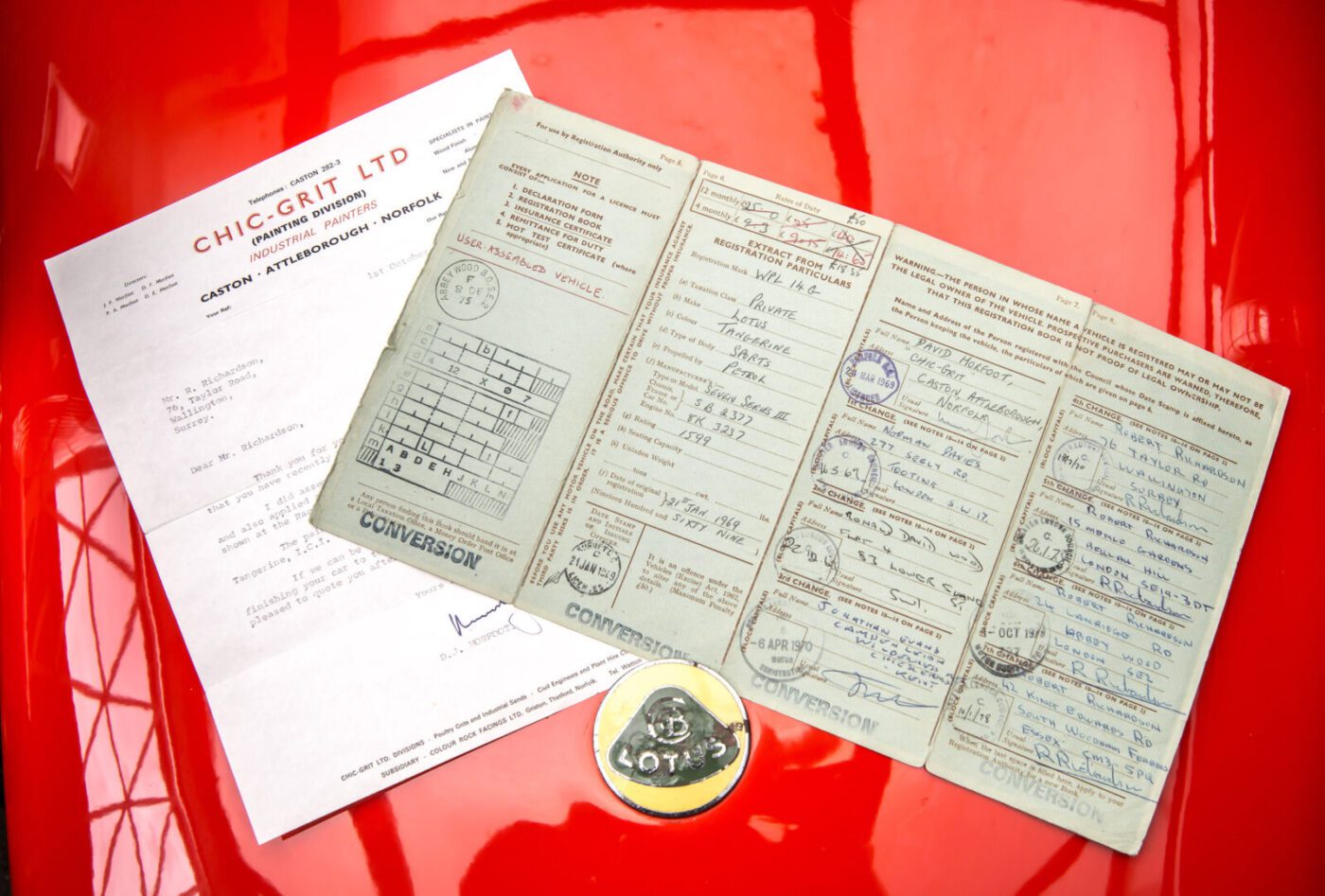
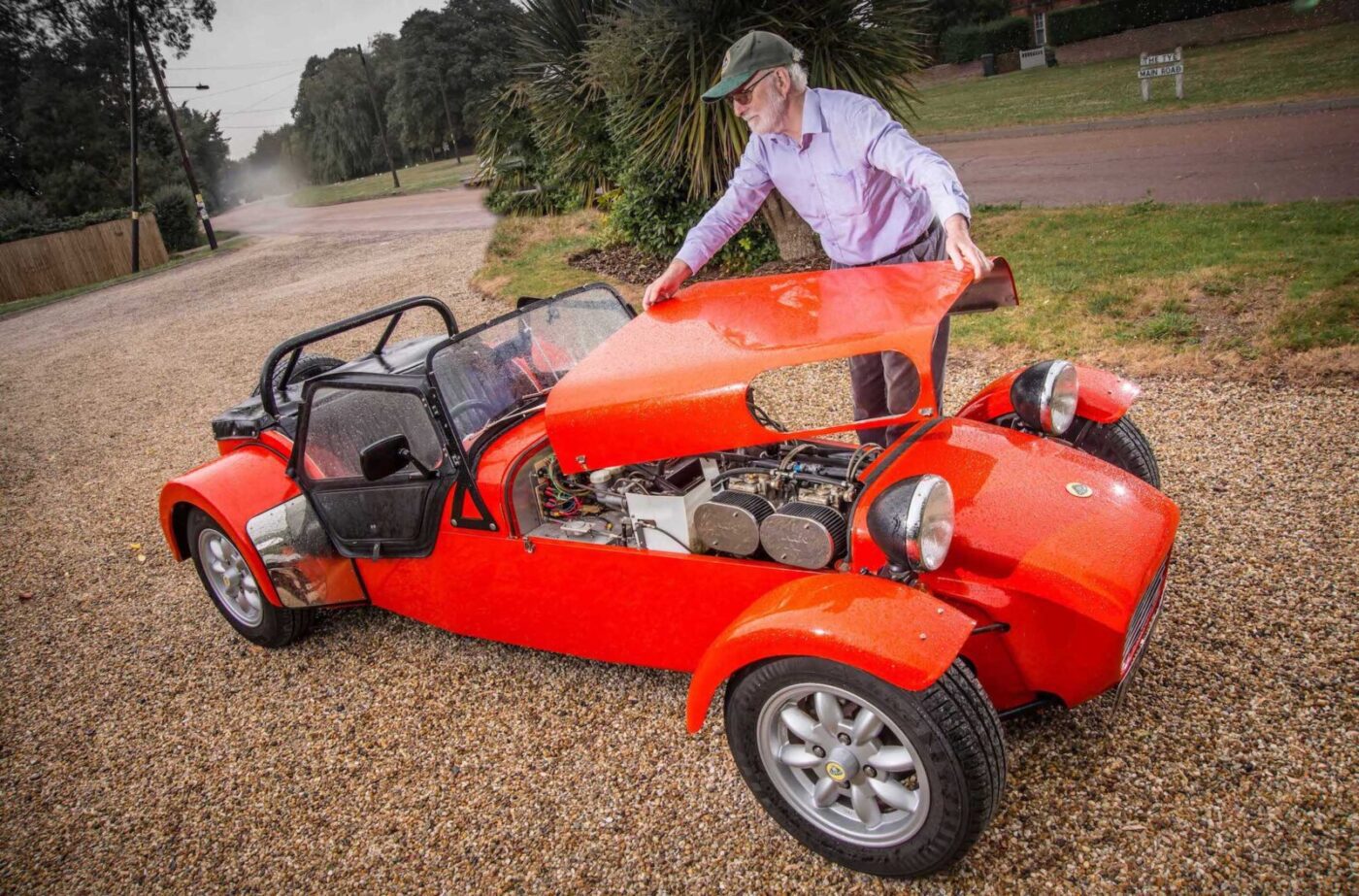
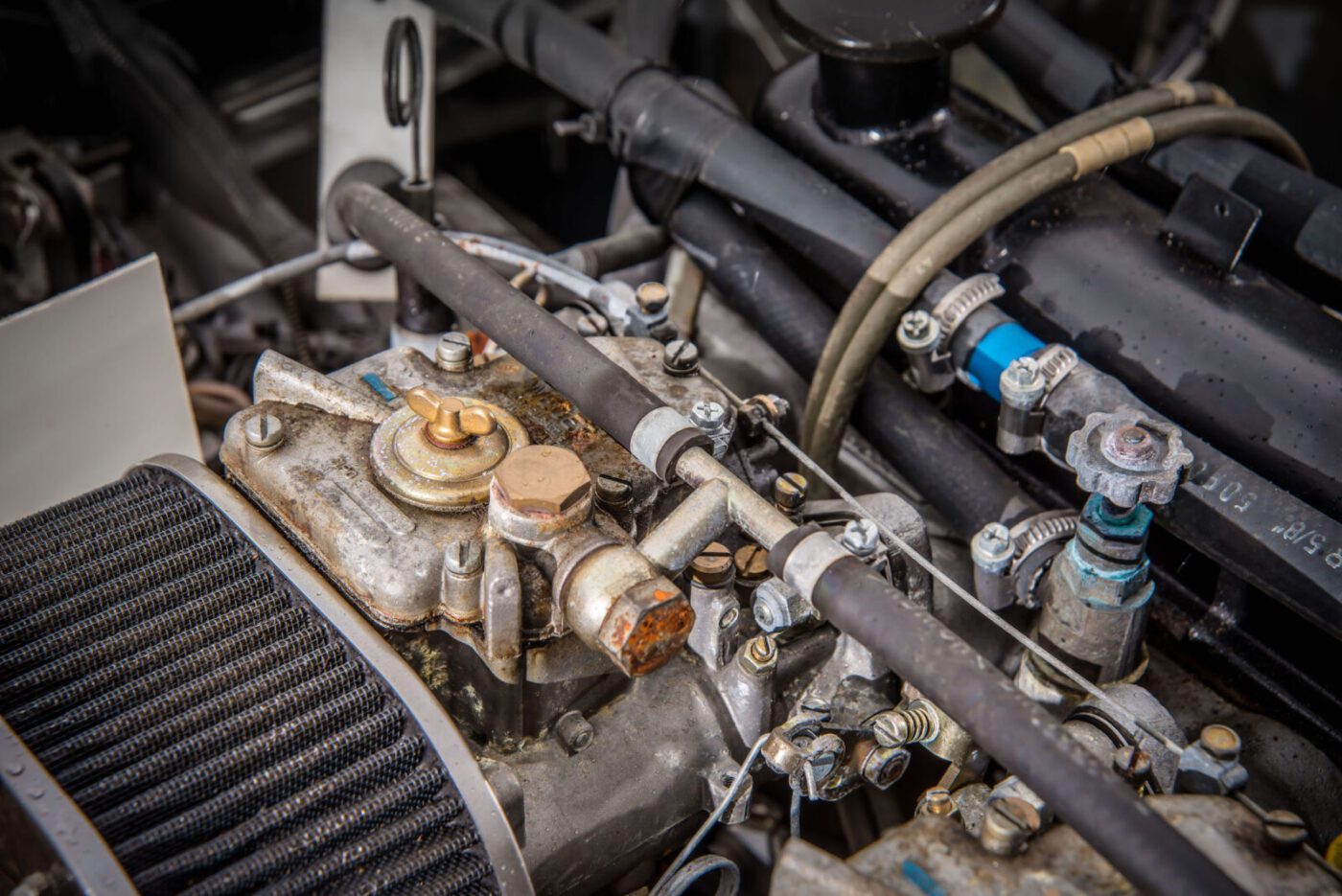
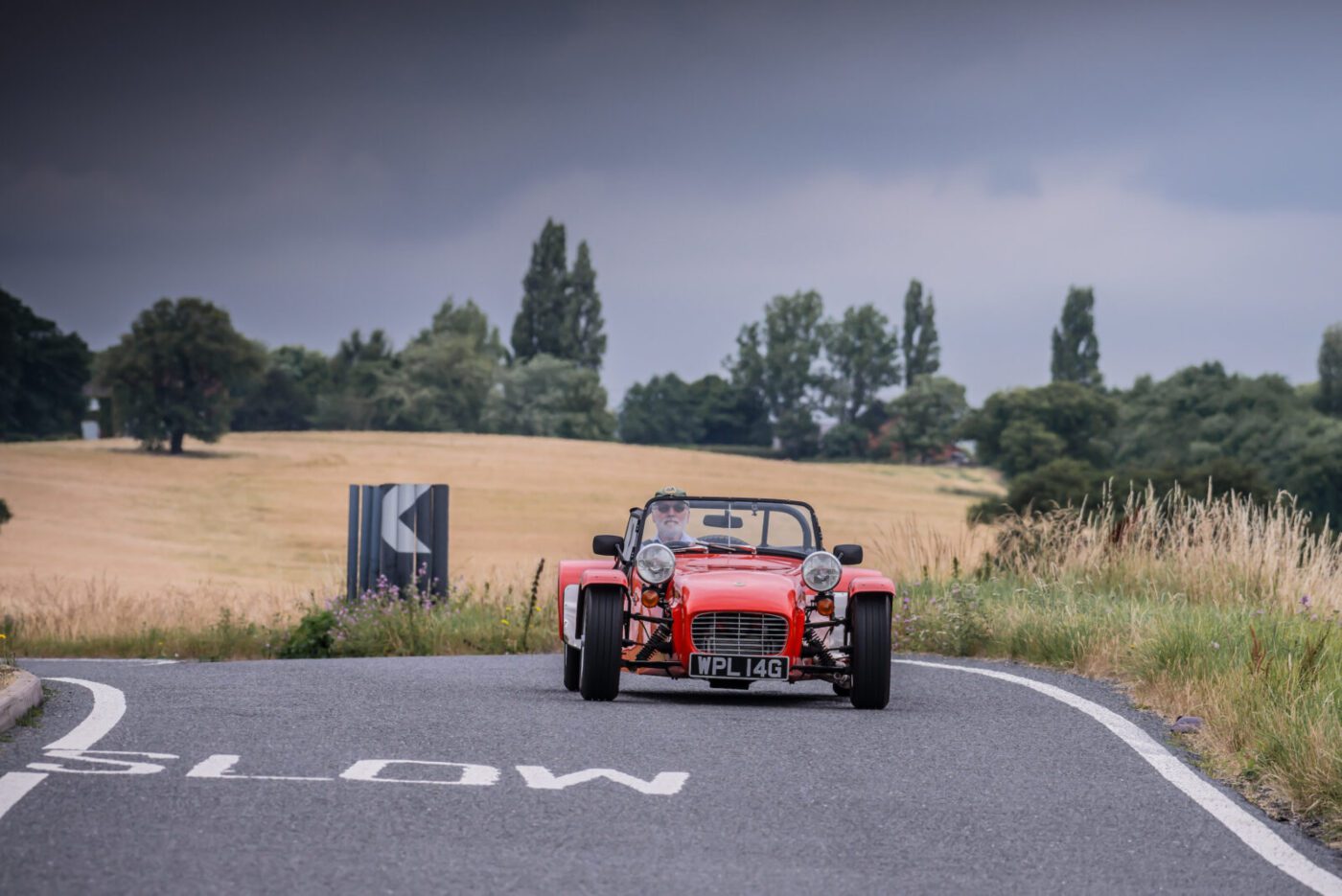
The flexible steering joint snapped and the car went into a ditch
“I went round a corner a bit quick, with some force, and the flexible steering joint snapped and the car went into a ditch. The steering wheel just spun round and round. I thought ‘I’m going to have to do this up’.”
Now working at EEV, part of the troubled Marconi group, Bob opted to for a two-day working week, spending his off days working on a complete rebuild of the car he’d owned for more than 30 years.
“It took me three years. It was a ground-up rebuild, with the body and chassis repaired by Arch Motors. I rebuilt the engine, gearbox, re-wired it – did the whole thing and spent quite a bit of money on it,” he says.
The car was upgraded to Sprint specification, switching to twin 40DCOE Weber carburetors, which added another 25bhp, and converted to run on unleaded petrol, while the tangerine paint was refreshed by TSK in Kent.
“When I rebuilt it I fitted cycle wings because I could get closer to it to work on, which made it easier as I got older. It looks like a Caterham 7 because of the cycle wings, but they were an option on the S3,” says Bob.
“By this time I did have one eye on the value. They are becoming popular again because they are different, and it’s now valued at £16,000.”
The Seven has been joined by two more Lotus’s in Bob’s collection, a 1974 Elan+2 that he restored himself, and a more modern Elise he says is even less practical than the Seven.
“You can pack a lot of stuff in the Seven, but you do have to think about it and put clothes in plastic bags etc,” he says.
“But you can’t get very much in the Elise. You could go shopping in the Seven and put food in the back. The only place you can store stuff in the Elise is in the boot space, which is above the rear part of the engine bay, so any frozen stuff melts by the time you get home.”
The Seven is the one with the emotional attachment
Of them all, the Seven is the one with the emotional attachment that only long-term ownership can bring.
“It just reminds me of a lot of things. It has been part of the family,” he says. “Most of my mates say you will never sell it, and I don’t think I ever will.
“My kids are interested in it and maybe one of them will keep it and take it to shows.”
These days, with Bob and Gill both making successful recoveries from illness, the little car enjoys a more leisurely life.
Its days as a commuter car may be over, but this perfect embodiment of Colin Chapman’s ideal of a lightweight, sharp-handling road-racer has plenty more days in the sun in the hands of its devoted owner.
